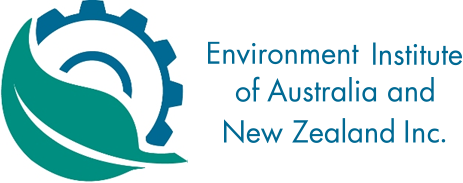-
Member Login
- Home
- About
- Institute Groups
- Membership
- Events
- News & Publications
- Institute Programs
- Resources
- Jobs Board
- Contact Us
- Site Info
National Flying-fox Forum
The National Flying-fox Forum brought together 75 enthusiastic people including local government environment officers, flying-fox carers, ecological consultants, Queensland and New South Wales environment department officers and Department of the Environment and Energy staff to work towards a National Flying-fox Strategy. The forum was a joint event held by the EIANZ’s Ecology Special Interest Section (SIS) and the SEQ Division and was held at the Eco Centre at Griffith University’s Nathan Campus.
The forum was preceded by a half day bus tour to two flying-fox camps; Emerald Woods on the Sunshine Coast and Redcliffe Botanic Gardens at Redcliffe. Raeleen Draper from the Sunshine Coast Council met 25 people eager to learn about the Council’s innovative system for managing flying-foxes in partnership with the community. Council have installed canopy-level sprinklers that are partially controlled by adjacent residents to assist with moving flying-foxes back into the centre of the small bushland fragment when they encroach too close to the edge. The residents were even on hand to provide a practical demonstration of the sprinklers.

Above: Raeleen Draper (centre) discussing Sunshine Coast Regional Council’s canopy mounted sprinkler system to deter flying-foxes.
The second stop was at the Redcliffe Botanic Gardens where we heard from Andrew Evans, an Environment Officer from Moreton Bay Regional Council, regarding the Council’s flying-fox monitoring strategy and publicly-accessible population information database. The database is updated fortnightly for some camps and provides residents with information about population numbers and species of flying-foxes within their area.
The forum was held on Threatened Species Day and, coincidentally, the 30th anniversary of the First National Flying-fox Symposium, which was also held in Brisbane in 1986. Les Hall kindly donated several copies of the symposium papers for delegates, which was an added bonus. The forum kicked-off with presentations from keynote speakers, John Martin (Wildlife Ecologist, Royal Botanic Gardens Sydney), Dave Westcott (Principal Research Scientist, CSIRO), Peggy Eby (Behavioural Ecologist, University of New South Wales) and Mike Roache (Threatened Species Principal Project Officer, NSW Office of Environment and Heritage).
The second part of the forum was dedicated to speed talks – where speakers were allowed 10 minutes to provide an overview of their project/experience. Despite the ominous warnings from the time-keepers, most speakers were able to get through their presentation and some even had time spare for questions. Speed talks were followed by a panel discussion where delegates could pose questions to the keynote speakers – cue a lively discussion.
The third and final part of the forum was dedicated to group discussions around four themes of the proposed National Flying-fox Strategy:
- Flying-foxes and habitat conservation
- Camp management
- Policy and research
- Responsibilities and stewardship.
Group members were asked to ‘like’ the proposed principles in each theme and also propose their own. Much discussion was had along with some fantastic ideas being generated. There was broad support for the creation of a national body to facilitate flying-fox management and to influence the creation and adoption of a National Flying-fox Strategy.
Finally, I wish to thank the forum organising committee for their hard work and commitment over the last nine months; Lee-Anne Veage, Joe Adair and Jess Bracks with support from Beth Kramer, Emily Hatfield and Danielle Bolton.
We acknowledge and value the rights and interests of Indigenous Peoples in the protection and management of environmental values through their involvement in decisions and processes, and the application of traditional Indigenous knowledge.

